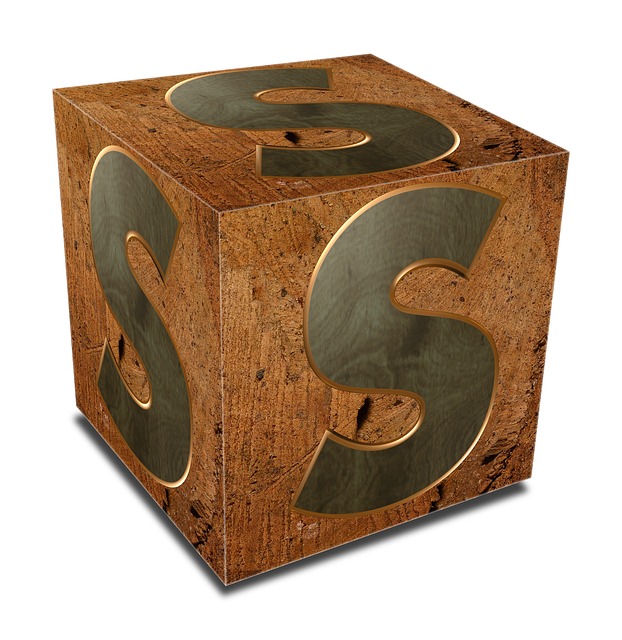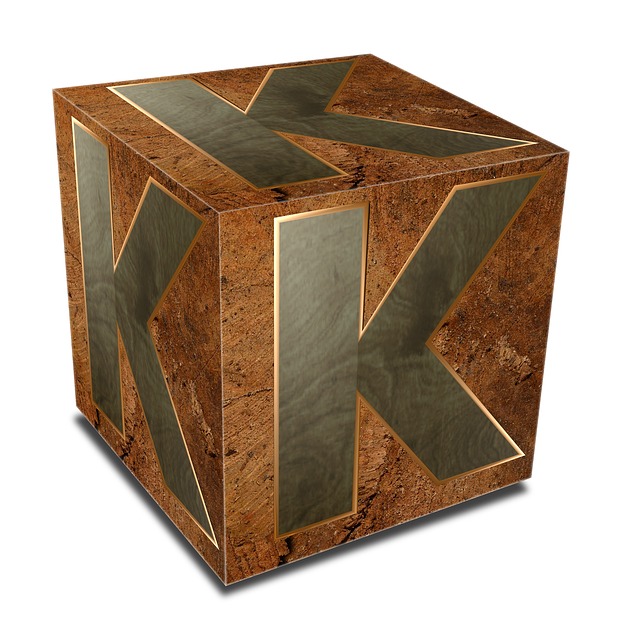Welcome to the world of 3D block lettering, where every stroke and curve has the power to bring your words to life! In this article, we will dive into the mesmerizing art of 3D block lettering and uncover the secrets behind transforming flat words into eye-catching masterpieces. Whether you’re a seasoned artist or new to the world of lettering, prepare to unleash your creative expression and take your designs to new dimensions. Join us on this informative journey as we explore the techniques, tools, and tips that will help you master the art of 3D block lettering, one captivating letter at a time. Get ready to wield your pen like a magic wand and leave your mark on the world!
Contents
- Choosing the Right Tools for 3D Block Lettering
- Understanding the Basics of 3D Block Lettering
- Exploring Different Techniques for Adding Depth and Shadow to Your Letters
- Adding Personal Style to Your 3D Block Lettering
- Tips and Tricks for Creating Eye-Catching Color Combinations in 3D Block Lettering
- Mastering the Art of Script and Cursive 3D Block Lettering
- Creating 3D Block Lettering Effects with Texture and Patterns
- Taking Your 3D Block Lettering to the Next Level: Advanced Techniques and Ideas
- Frequently Asked Questions
- To Conclude
Choosing the Right Tools for 3D Block Lettering
When it comes to creating stunning 3D block lettering, choosing the right tools can make all the difference. Here are some essential tools that will help you bring your letter designs to life:
1. **Specialized 3D Software**: To start, you’ll need a powerful 3D software program that allows you to create and manipulate letter shapes in three dimensions. Look for software that offers a wide range of tools and features, such as the ability to extrude, bevel, and color your letters. Some popular options include Blender, Autodesk Maya, and Adobe Dimension.
2. **High-Quality Graphics Tablet**: A graphics tablet is essential for precise and smooth drawing in 3D software. Opt for a tablet that offers pressure sensitivity, as this allows for greater control over line thickness and shading. Tablets like Wacom Intuos Pro and Huion Kamvas Pro are popular choices among digital artists.
3. **Versatile Modeling Tools**: To add intricate details and textures to your 3D lettering, you’ll need a set of modeling tools. These can include items such as sculpting brushes, clay shapers, and stylus pens. Experiment with different tools to achieve unique effects and textures in your designs.
4. **Decent Computer Hardware**: A powerful computer is crucial for smooth 3D rendering and modeling. Make sure your computer meets the recommended specifications of the 3D software you’ll be using, including having a fast processor, sufficient RAM, and a dedicated graphics card.
5. **Reference Material**: Having a collection of reference material, such as design books, typography guides, or even online image references, can greatly aid in inspiring and guiding your lettering creations. Use references to study different lettering styles, proportions, and lighting effects to enhance your designs.
Remember, choosing the right tools is just the beginning. It’s important to practice regularly to refine your skills in 3D block lettering. With dedication and creativity, you’ll soon be creating eye-catching and visually impactful letter designs that truly stand out.
Understanding the Basics of 3D Block Lettering
In the world of graphic design, 3D block lettering is a technique that can instantly add depth and dimension to your designs. Whether you’re creating a logo, designing a poster, or simply adding text to an image, can greatly enhance your visual creations. Here are some key points to help you navigate the exciting realm of 3D block lettering:
1. Choose the right font: Selecting a font that works well for 3D block lettering is crucial. Opt for fonts with bold and heavy strokes as they tend to work best for this technique. Fonts like Impact, Bebas Neue, or Helvetica Bold can make your block lettering pop.
2. Focus on the lighting: Lighting is essential when it comes to creating realistic 3D block lettering. To achieve a three-dimensional effect, imagine a light source in your design and apply shadows accordingly. Using gradients or adding highlights can further enhance the depth of your letters.
3. Experiment with angles and perspective: Get creative with the orientation and perspective of your block letters. Tilt them, rotate them, or stack them to add an interesting visual element to your design. Remember, the more you play around with different angles, the more dynamic and unique your block lettering will look.
4. Add texture and details: Don’t be afraid to experiment with textures and details to make your block lettering stand out. Apply gradient overlays, use brush strokes to give your letters a hand-painted feel, or add subtle patterns for a touch of sophistication. These small details can make a big difference in bringing your 3D block lettering to life.
Incorporating 3D block lettering into your designs can take them from flat to fantastic in no time. By following these basic tips and allowing yourself to experiment and think outside the box, you’ll be well on your way to creating captivating and eye-catching visuals. So, grab your design tools, unleash your imagination, and let your 3D block lettering shine!
Exploring Different Techniques for Adding Depth and Shadow to Your Letters
In the world of lettering and calligraphy, adding depth and shadow to your letters can make them truly stand out and come to life. There are various techniques you can explore to achieve this effect and enhance the visual impact of your creations. Let’s delve into some creative ways you can add depth and shadow to your letters:
1. Gradation Techniques:
– Use a gradation of color or shade within your letters to create a sense of depth.
– Start with a lighter shade at one end of the letter and gradually darken it towards the other end.
– Experiment with different color combinations and transitions to add depth and dimension.
2. Drop Shadows:
– Add a drop shadow to your letters to simulate the effect of a light source casting a shadow.
– Place the shadow slightly offset from the letter’s contour, considering the angle and intensity of the light source.
– Play with the opacity and blur of the shadow to achieve the desired effect; a soft and subtle shadow can create a gentle depth, while a solid and bold shadow can make your letters pop.
Remember to experiment with these techniques and find the style that suits your creative vision. Adding depth and shadow to your letters can provide a whole new level of visual interest and make your lettering pieces truly captivating. So grab your pens, paints, or digital tools, and have fun exploring and pushing the boundaries of your lettering art!
Adding Personal Style to Your 3D Block Lettering
Creating 3D block lettering is a fantastic way to make your artwork pop off the page. However, it’s the personal touch and unique flair that can truly set your lettering apart. Here are a few simple yet effective ways to infuse your own style into your 3D block lettering:
1. Experiment with different fonts: Play around with various fonts to find one that matches your personal aesthetic. Whether you prefer sleek and modern or whimsical and playful, selecting the right font can instantly elevate your lettering.
2. Incorporate intricate patterns: Break away from the traditional solid blocks and add intricate patterns to your lettering. Whether it’s bold stripes, floral motifs, or geometric shapes, these patterns can bring a whole new dimension to your artwork. Use stencils, masking tape, or freehand techniques to create eye-catching designs within each block.
3. Combine contrasting colors: Don’t be afraid to mix and match contrasting colors to make your lettering stand out even more. Bold and vibrant colors can add energy and excitement, while muted and pastel shades create a softer and more elegant look. Experiment with different color combinations to find the perfect balance that reflects your personal style.
4. Add unique textures and gradients: Give your block lettering a tactile feel by incorporating interesting textures and gradients. Consider using techniques such as stippling, cross-hatching, or shading to create depth and dimension within each letter. This can add a sense of realism and visual interest to your artwork.
Remember, personal style is all about expressing yourself and experimenting with different elements that resonate with you. So, let your creative instincts guide you as you add your own unique touch to your 3D block lettering.
Tips and Tricks for Creating Eye-Catching Color Combinations in 3D Block Lettering
In the world of 3D block lettering, the right color combination can make all the difference in creating eye-catching designs. By strategically choosing and pairing colors, you can elevate your lettering to a whole new level. Here are some tips and tricks to help you create stunning color combinations for your 3D block lettering projects:
1. Harmonious Hues: Opt for colors that are visually pleasing when paired together. Consider using a color wheel to select complementary colors or analogous colors that are adjacent to each other on the wheel. This will create a harmonious and balanced look. For example, pair vibrant blues with deep purples or bright yellows with rich oranges.
2. Contrast is Key: Creating contrast in your color combinations can add depth and dimension to your lettering. Choose colors that are opposites on the color wheel, such as pairing warm oranges with cool blues or bright greens with deep purples. The contrast will make your letters pop and grab attention.
3. Play with Shades and Tints: Incorporating shades and tints of your chosen colors can add visual interest to your block lettering. Experiment with lighter or darker versions of the same hue to create a gradient effect. This technique can create a sense of depth and make your letters appear more three-dimensional.
4. Experiment with Texture: Don’t limit yourself to flat colors. Adding texture to your block lettering can take your designs to the next level. Use gradient brushes or add patterns to your letters to create a unique and eye-catching look. This can be achieved by using textured brushes in graphic design software or by adding physical textures to your letters with paint or other materials.
With these tips and tricks, you can unlock the full creative potential of 3D block lettering by using captivating color combinations. Remember to experiment, trust your instincts, and have fun with your designs. Let your imagination run wild, and watch as your eye-catching lettering creations come to life!
Mastering the Art of Script and Cursive 3D Block Lettering
In the world of typography, script and cursive 3D block lettering stands out as a truly captivating art form. This unique style combines the flowing elegance of script and cursive writing with the boldness and dimensionality of block letters. The result is a visually stunning display that effortlessly captures attention and adds a touch of sophistication to any project.
To master the art of script and cursive 3D block lettering, there are a few key principles to keep in mind. First and foremost, understanding the basic structure of each letter is crucial. Pay close attention to the curves, loops, and flourishes that define script and cursive writing. Practice sketching each letter individually until you have a firm grasp on their shapes and angles.
Next, focus on creating depth and dimension in your lettering. Utilize shading techniques to give your letters a three-dimensional effect. Experiment with different light sources to understand how shadows should fall on each letter. By adding depth, you can make your script and cursive 3D block lettering truly come alive on the page.
One important aspect of achieving exceptional script and cursive 3D block lettering is developing a unique style. Experiment with different embellishments, such as swashes, ligatures, or decorative serifs, to make your lettering stand out. Play with variations in line weight to add depth and contrast. Remember, the key to a captivating design lies in the details.
Lastly, practice, practice, practice! Repetition is key when it comes to mastering any skill, and script and cursive 3D block lettering is no exception. Set aside dedicated time each day to refine and develop your technique. As you gain confidence, explore different surfaces and mediums to work on, from paper to wood to digital canvases. The more you practice, the more your unique style will emerge and flourish.
With dedication and perseverance, is within your reach. Embrace the elegance of script and cursive, combine it with the boldness of block letters, and let your creativity flow. Whether you’re designing logos, posters, or personalized artwork, these captivating lettering techniques will bring an added level of artistry and sophistication to your projects. So, grab your pen or digital stylus, and let your imagination run wild!
Creating 3D Block Lettering Effects with Texture and Patterns
In the digital design world, creating eye-catching 3D block lettering effects can make your typography stand out and grab attention. Adding textures and patterns to these lettering styles can further enhance their visual impact. With a few simple techniques, you can easily achieve captivating 3D block lettering effects that incorporate texture and patterns.
One way to add texture to your block lettering is by utilizing layer styles in your graphic design software. Apply a pattern overlay to your letters to instantly give them a unique and textured appearance. Experiment with different patterns, such as wood grain, stone, or even fabric, to create various visual effects. Additionally, you can also use gradient overlays to add depth and dimension to your lettering. Play around with the colors and angles to achieve the desired 3D effect that will make your text pop.
Another method to create visually impactful 3D block lettering is by incorporating embossing or debossing effects. These techniques involve manipulating shadows and highlights to create an illusion of depth on the lettering surface. By using tools like drop shadows and bevel and emboss effects, you can simulate the appearance of real-world embossed or debossed textures. Adjust the settings and angles to achieve the desired level of dimensionality, and don’t be afraid to experiment with different lighting and shadow angles to make your lettering truly stand out.
Taking Your 3D Block Lettering to the Next Level: Advanced Techniques and Ideas
So you’ve mastered the art of 3D block lettering and you’re looking to take it up a notch? Look no further! In this post, we’ll explore some advanced techniques and ideas that will help you elevate your block lettering game and create stunning designs that will leave everyone in awe.
1. Experiment with Shadows
Adding shadows to your block lettering can give it an incredible depth and dimensionality. Start by considering the position of your light source, whether it’s from the top, bottom, or side. Then, using a slightly darker shade of your letter color, add shadows to one side of each letter. This simple technique can instantly make your block lettering pop off the page and create a more realistic and dramatic effect.
2. Incorporate Gradient Coloring
Add a touch of sophistication to your block lettering by experimenting with gradient coloring. Begin by selecting two or more colors that complement each other. Then, apply the lighter color to the top of each letter, gradually transitioning to the darker color towards the bottom. This gradient effect adds a sense of depth and visual interest to your block lettering and can take your designs to a whole new level.
By incorporating these advanced techniques into your 3D block lettering, you’ll be able to create visually stunning designs that are sure to grab attention. So, grab your pens, brushes, or digital tools and start experimenting – the possibilities are limitless!
Frequently Asked Questions
Q: What is 3D block lettering?
A: 3D block lettering is a type of typography that creates a three-dimensional effect, giving the letters depth and dimension. It’s a popular technique used to make words or phrases visually appealing and attention-grabbing.
Q: What materials are needed to create 3D block lettering?
A: To create 3D block lettering, you will need paper or a digital design software, a pencil or digital stylus, an eraser or editing tools, and coloring materials such as markers, colored pencils, or digital brushes.
Q: How can I start learning 3D block lettering?
A: To get started with 3D block lettering, it’s important to understand the basic principles of perspective and shading. There are many online tutorials and resources available that can guide you through the process step by step. Additionally, practicing regularly is key to improving your skills.
Q: Are there any specific fonts or styles that work best for 3D block lettering?
A: While there are no specific fonts or styles that work best, it’s recommended to choose block-style fonts that have straight lines and sharp corners, as they are easier to transform into 3D. However, feel free to experiment with different fonts and styles to find what suits your artistic expression.
Q: Can I create 3D block lettering digitally?
A: Absolutely! With the advancements in digital design software, creating 3D block lettering digitally has become increasingly popular. The process involves using tools like Adobe Photoshop or Illustrator to manipulate text and add depth, shadows, and highlights. It offers great flexibility and allows for easy experimentation.
Q: How can I add depth to my 3D block lettering?
A: To add depth to your 3D block lettering, start by sketching the letters by hand or digitally. Then, create shadows by adding shading to one side of each letter and highlights to the opposite side. By using different tones or colors, you can enhance the three-dimensional effect and make the letters appear more realistic.
Q: What are some additional tips for creating stunning 3D block lettering?
A: Here are a few tips to help you create stunning 3D block lettering:
1. Use thick lines to outline your letters, making them stand out.
2. Play with colors and gradients to add more vibrancy.
3. Experiment with different shading techniques to achieve various effects.
4. Practice drawing shadows and highlights to make your letters look more realistic.
5. Pay attention to the composition and balance of your design.
6. Have fun and let your creative expression flow!
Q: Where can I find inspiration for 3D block lettering projects?
A: Inspiration for 3D block lettering projects can be found in various places. Websites like Pinterest, Behance, or Instagram are great platforms to discover the works of talented artists. Additionally, exploring graffiti, typography, or street art can provide you with unique ideas and styles to incorporate into your own designs.
Q: How long does it typically take to master 3D block lettering?
A: The time it takes to master 3D block lettering varies from person to person. It depends on your dedication, practice routine, and natural artistic abilities. Like any skill, it requires patience and consistent effort. It’s important to enjoy the process of learning and not rush the journey towards mastery.
To Conclude
In conclusion, mastering the art of 3D block lettering opens up a world of creative possibilities. With practice and dedication, anyone can unleash their artistic expression and bring their words to life in a captivating and dynamic way. So grab your pens and get ready to explore this exciting art form!








